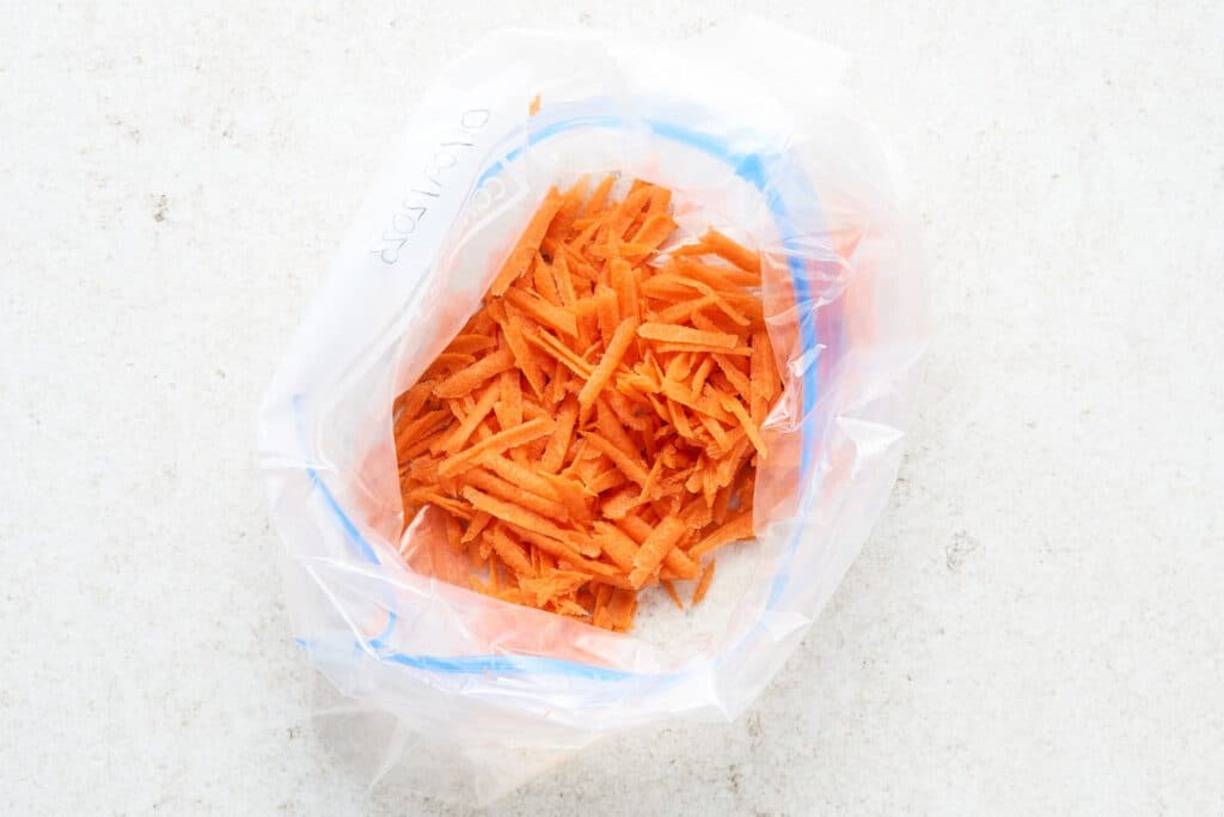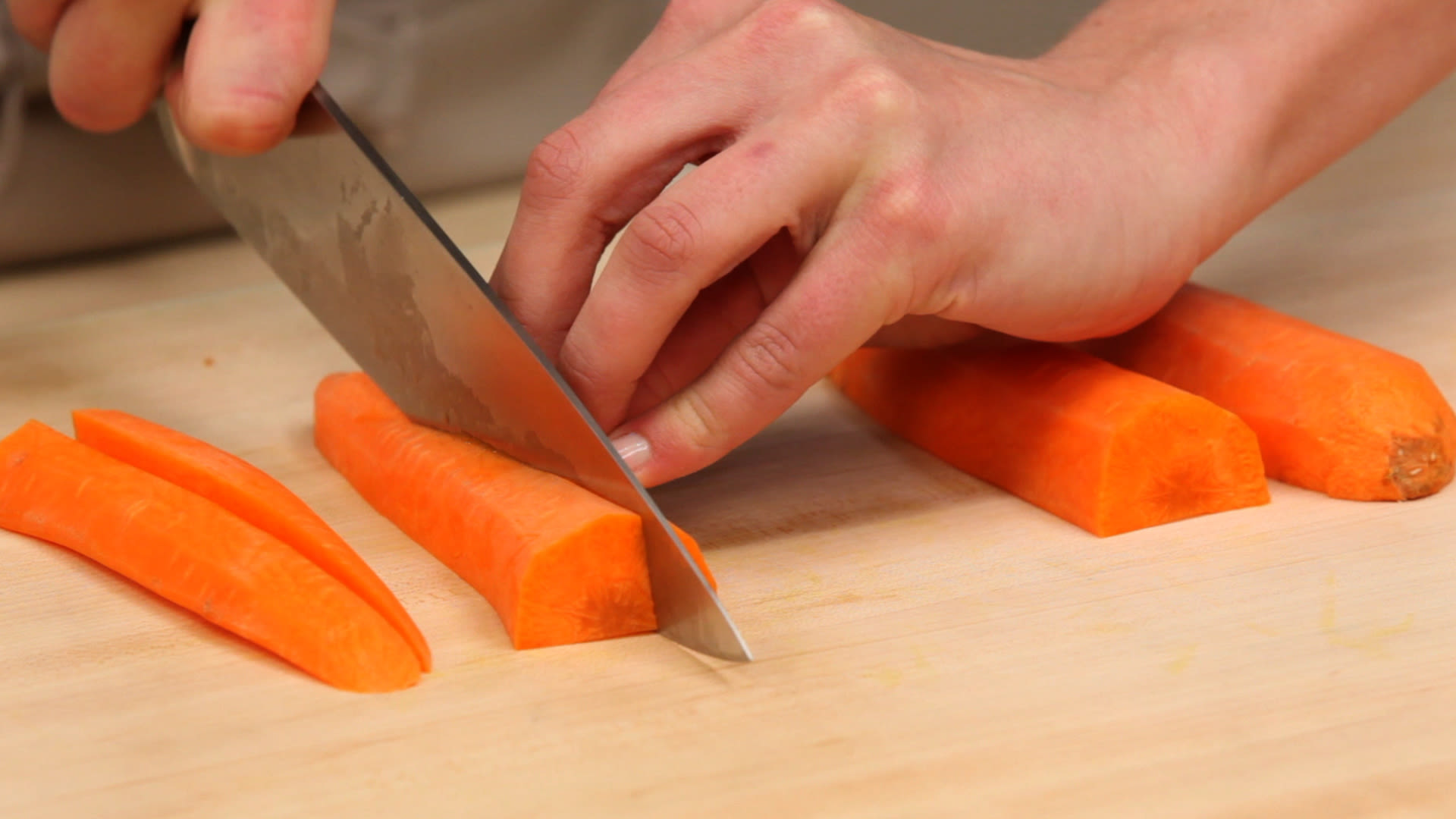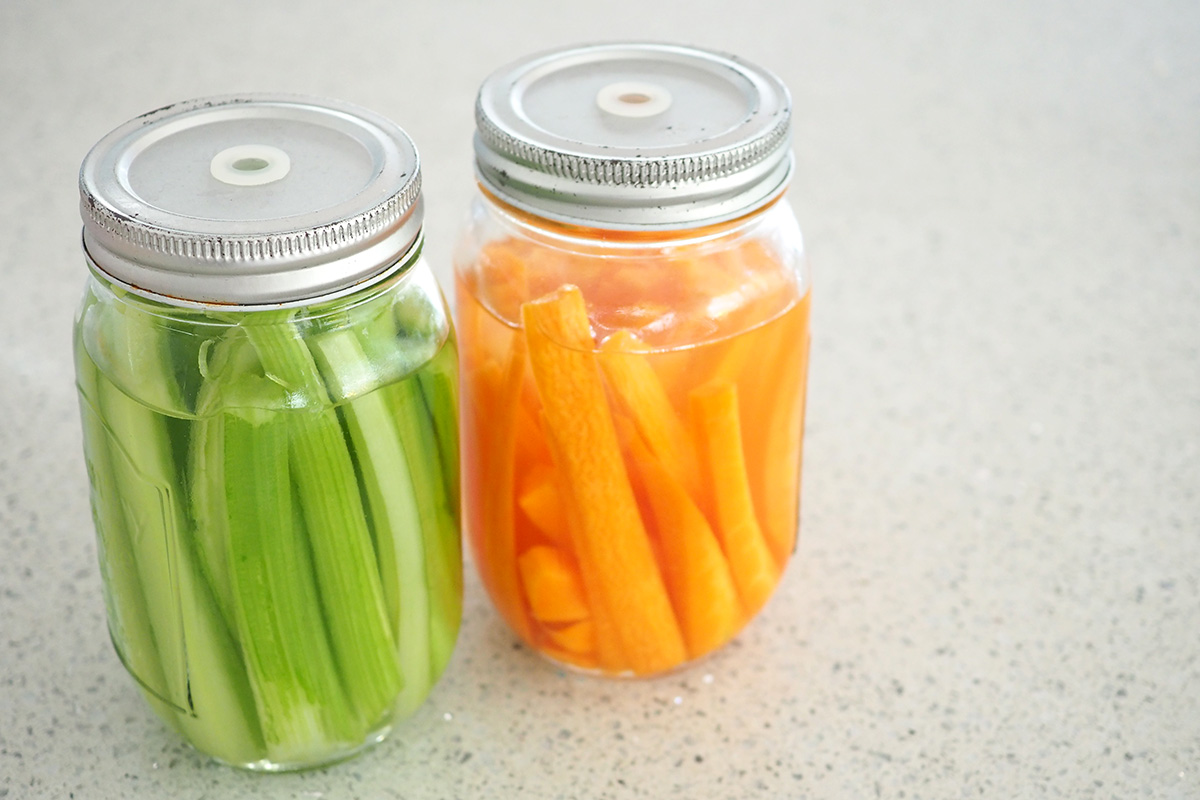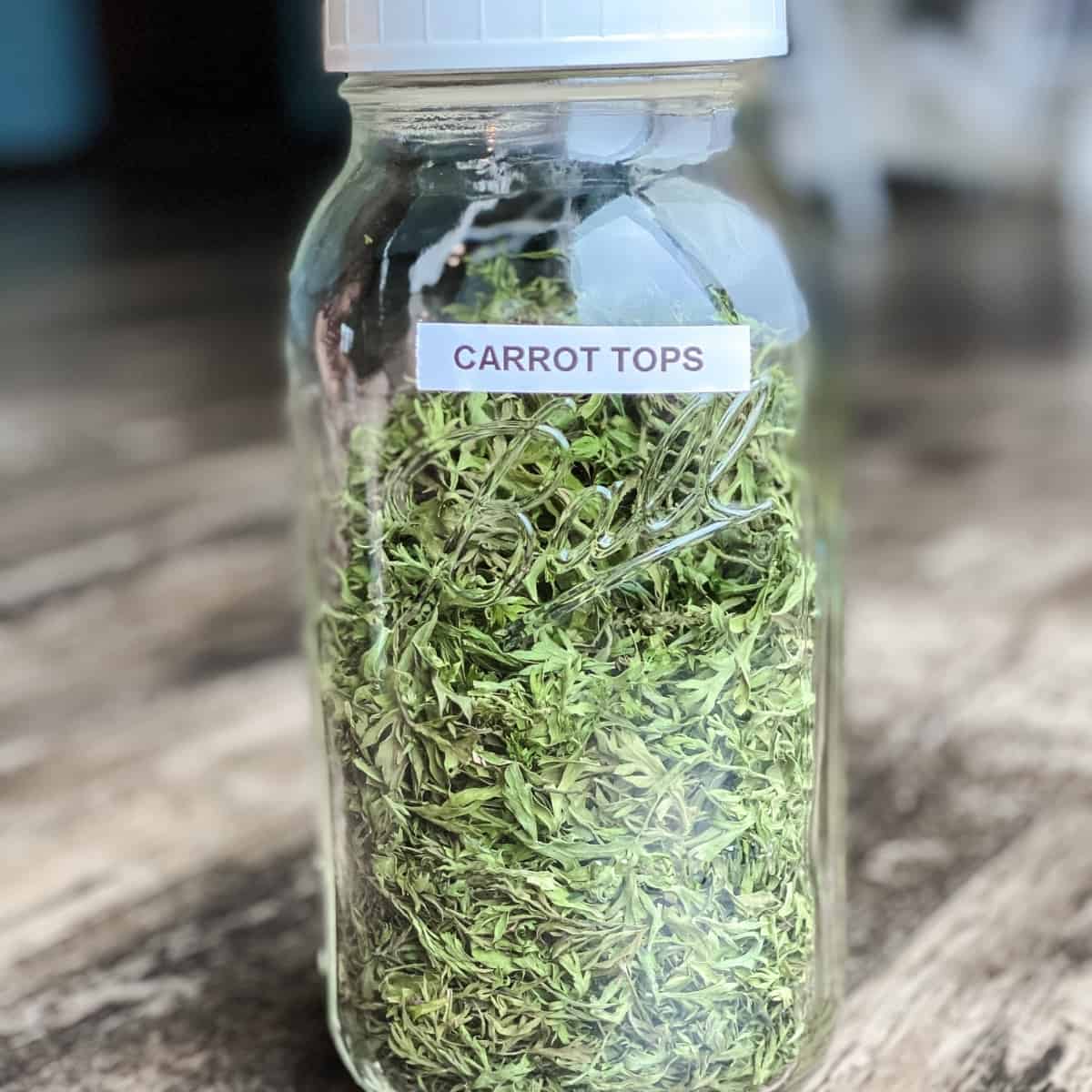

Articles
How To Store Carrots In Freezer
Modified: January 18, 2024
Learn how to store carrots in the freezer with this informative article. Keep your carrots fresh and ready to use for future recipes.
(Many of the links in this article redirect to a specific reviewed product. Your purchase of these products through affiliate links helps to generate commission for Storables.com, at no extra cost. Learn more)
Introduction
Carrots are a versatile and nutritious vegetable that can be enjoyed in various ways. Whether you grow your own carrots or buy them from the farmers’ market or grocery store, it’s common to have an abundance of carrots on hand. But what do you do when you have more carrots than you can consume before they start to spoil? Freezing carrots is an excellent solution that can help preserve their freshness and flavor for an extended period.
In this article, we will guide you through the process of storing carrots in the freezer, ensuring that you can enjoy their delicious taste and nutritional benefits long after the harvest season is over.
Key Takeaways:
- Freezing carrots preserves their nutrients, extends shelf life, reduces food waste, and offers cost savings. Proper preparation, blanching, and storage ensure convenient and nutritious use year-round.
- Thaw frozen carrots in the refrigerator or cold water, and use them in various cooked dishes. Follow freezing tips for optimal results and enjoy the convenience of this versatile vegetable.
Read more: How To Store Carrots In Sand
Benefits of Freezing Carrots
Freezing carrots offers numerous benefits, making it a smart choice for preserving this healthy and vibrant vegetable. Here are some of the key advantages of freezing carrots:
- Extended Storage Life: By freezing carrots, you can significantly extend their shelf life. While fresh carrots typically last for a few weeks in the refrigerator, frozen carrots can be stored for up to a year without losing their quality.
- Preserved Nutritional Value: Freezing carrots allows you to lock in their nutrients, ensuring that you retain their vitamins, minerals, and antioxidants. This is particularly beneficial if you have a surplus of carrots that you want to enjoy over an extended period.
- Convenience and Versatility: When you have frozen carrots on hand, you always have a convenient ingredient ready to incorporate into your favorite recipes. Whether you want to add them to stews, stir-fries, soups, or even smoothies, frozen carrots can be easily and quickly added to any dish, saving you time and effort in the kitchen.
- Reduced Food Waste: Freezing carrots is an excellent way to minimize food waste. Rather than allowing excess carrots to go bad, freezing them allows you to preserve their freshness and avoid throwing them away.
- Cost Savings: Buying carrots in bulk when they are in season and freezing them for later use can be a cost-effective way to enjoy this nutritious vegetable year-round. You can take advantage of sales and promotions to stock up on carrots and save money in the long run.
These benefits make freezing carrots a practical and economical choice for anyone who wants to enjoy the taste and health benefits of carrots all year round.
Preparing Carrots for Freezing
Before you can freeze carrots, it is essential to properly prepare them to maintain their quality during the freezing process. Follow these steps to prepare your carrots for freezing:
- Choose Fresh Carrots: Select fresh and firm carrots for freezing. Avoid carrots that are soft, wilted, or have any signs of decay.
- Wash and Peel: Thoroughly wash the carrots under running water to remove any dirt or debris. If desired, you can peel the carrots, although it is not necessary. Peeling can help remove any bitter or tough outer layers, but it is a matter of personal preference.
- Trim the Ends: Trim both ends of the carrots using a sharp knife. This step is optional, but it can help ensure even cooking and freezing.
- Cut into Desired Shapes: Decide how you want to freeze your carrots. You can slice them, dice them, or leave them whole. Consider the intended use and recipe requirements when deciding how to cut your carrots. For example, if you plan to use them for soups or stews, slicing or dicing them may be preferable.
- Blanching (Optional): Blanching is a process that involves briefly boiling the carrots before freezing them. Blanching helps preserve the color, texture, and nutrients of the carrots. While blanching is optional, it is highly recommended as it improves the overall quality of frozen carrots.
By following these steps, you will ensure that your carrots are properly prepared for freezing. Next, let’s explore the blanching process in more detail.
Blanching Carrots
Blanching is a crucial step in the process of preparing carrots for freezing. It involves briefly boiling the carrots and then rapidly cooling them. Blanching helps to preserve the color, texture, and nutrients of the carrots, ensuring that they remain fresh and flavorful even after freezing. Follow these steps to blanch carrots:
- Bring a Pot of Water to a Boil: Fill a large pot with water and bring it to a rolling boil. Make sure there is enough water to completely submerge the carrots.
- Prepare an Ice Bath: While the water is boiling, prepare a large bowl or sink filled with ice water. This will be used to rapidly cool the carrots after blanching.
- Add the Carrots to the Boiling Water: Carefully place the prepared carrots into the boiling water. Make sure they are fully submerged.
- Blanch the Carrots: Allow the carrots to boil for a brief period, typically 2-3 minutes, depending on the size and thickness of the carrots. Blanching times may vary, so it’s best to check for doneness by testing the texture of the carrots. They should be slightly tender but still firm.
- Drain and Cool the Carrots: Once the blanching time is complete, use a slotted spoon or tongs to remove the carrots from the boiling water and immediately transfer them to the ice water bath. This rapid cooling process stops the cooking process and helps to preserve the carrots’ color and nutrients.
- Drain and Pat Dry: After the carrots have cooled in the ice water bath for a few minutes, drain them and pat them dry using a clean kitchen towel or paper towels. Removing excess water will prevent ice crystals from forming during freezing.
Blanching is an optional but highly recommended step in the freezing process. It helps to maintain the quality and freshness of the carrots, resulting in better-tasting and more vibrant frozen carrots. Once the carrots are blanched and cooled, they are ready for packaging and freezing.
Cooling and Packaging Carrots
After blanching the carrots, it is crucial to cool them properly before packaging them for freezing. Follow these steps to cool and package your blanched carrots:
- Cooling the Carrots: Once the carrots have been blanched and drained, spread them out on a baking sheet or tray in a single layer. This will allow them to cool evenly and quickly. Place the tray in the refrigerator or freezer for about 1-2 hours, or until the carrots are completely cooled. Cooling the carrots before packaging them helps to maintain their texture and prevent moisture buildup.
- Choose Suitable Freezer Containers: Select airtight, freezer-safe containers or freezer bags for storing the carrots. Ensure that the containers are clean and free from any contaminants.
- Packaging the Carrots: Once the carrots have cooled, transfer them to the chosen containers. For freezer bags, squeeze out as much air as possible before sealing them tightly. If using containers, leave a small amount of headspace at the top to allow for expansion during freezing. Label the containers with the date of freezing for easy identification.
- Freeze the Carrots: Place the packaged carrots in the freezer, ensuring they are kept upright and not stacked on top of each other. This will prevent them from becoming crushed or misshapen. For better organization, you can also lay the bags or containers flat until they are frozen solid, and then stack them for efficient use of freezer space.
Proper cooling and packaging of the blanched carrots are essential to maintain their quality during freezing. By following these steps, you can ensure that your frozen carrots remain fresh, flavorful, and easy to use whenever you need them.
To store carrots in the freezer, start by washing, peeling, and cutting them into desired sizes. Blanch the carrots in boiling water for 2-3 minutes, then immediately transfer them to an ice bath to stop the cooking process. Once cooled, pat them dry and place them in airtight freezer bags or containers, removing as much air as possible. Label the bags with the date and store them in the freezer for up to 12 months.
Read more: How To Store Carrots
Storing Carrots in the Freezer
Once your carrots have been properly cooled and packaged, it’s time to store them in the freezer. Follow these guidelines to ensure optimal storage of your frozen carrots:
- Choose a Suitable Freezer Location: Select a spot in your freezer that maintains a consistent temperature, ideally around 0°F (-18°C). Avoid storing the carrots near the freezer door or in areas prone to temperature fluctuations.
- Organize and Stack: Arrange the packaged carrots in a way that maximizes space in the freezer. Place them upright or flat, depending on the packaging used. If stacking containers or bags, ensure they are stable and won’t topple over.
- Keep Away from Strong Odors: Avoid storing strong-smelling foods or items near the carrots, as they can absorb odors. Opt for a separate section or drawer in the freezer to prevent any unwanted flavors transferring to the carrots.
- Monitor Freezer Temperature: Regularly check and maintain the freezer temperature to ensure it remains at the optimal freezing level. Fluctuations in temperature can negatively impact the quality of the frozen carrots.
By following these steps, you can ensure that your frozen carrots are stored in an organized and optimal manner, allowing for easy access and long-lasting quality.
Thawing and Using Frozen Carrots
When it comes time to use your frozen carrots, proper thawing is key to maintaining their texture and flavor. Here are some guidelines for thawing and using frozen carrots:
- Thawing in the Refrigerator: The best method for thawing frozen carrots is to transfer them from the freezer to the refrigerator. This allows them to thaw slowly and evenly. Place the freezer bag or container of carrots in the refrigerator overnight or for at least 8 hours until completely thawed.
- Thawing in Cold Water: If you need to thaw the carrots more quickly, you can use the cold water method. Place the frozen carrots in a leak-proof bag and submerge it in a bowl of cold water. Change the water every 30 minutes to keep it cold. This method typically takes about 1-2 hours, depending on the size and amount of carrots.
- Avoid Thawing at Room Temperature: It’s important to avoid thawing frozen carrots at room temperature, as this can promote the growth of harmful bacteria and lead to foodborne illnesses.
- Using Thawed Carrots: Once the carrots are thawed, you can use them in a variety of recipes. They work well in soups, stews, stir-fries, casseroles, and other cooked dishes. However, it’s important to note that the texture of thawed carrots may become softer compared to fresh ones, so they are best suited for cooked applications rather than raw consumption.
- Cooking Methods: When using thawed carrots in recipes, you can add them directly to the dish without further cooking. However, if you prefer them to have a firmer texture, you can lightly blanch or sauté them before incorporating them into your recipe.
By following these thawing guidelines, you can ensure that your frozen carrots are safely and properly thawed for use in your favorite dishes. Enjoy the convenience and flavor of your home-frozen carrots year-round!
Tips for Freezing Carrots
To make the most out of freezing carrots, consider these helpful tips to ensure the best results:
- Choose Fresh, High-Quality Carrots: Select carrots that are firm, crisp, and free from blemishes or signs of decay. Fresh carrots will freeze better and maintain their quality for longer.
- Properly clean and prepare the carrots: Thoroughly wash the carrots to remove any dirt or debris. Consider peeling them if desired or necessary for your recipes.
- Blanch for better results: While blanching is optional, it is highly recommended. Blanching helps preserve the color, texture, and nutrients of the carrots, resulting in better-tasting frozen carrots.
- Cool and dry thoroughly: After blanching, ensure that the carrots are cooled completely to room temperature before packaging. Pat them dry to remove excess moisture, as it can lead to the formation of ice crystals.
- Use proper freezer containers: Opt for airtight, freezer-safe containers or bags to prevent freezer burn and odor absorption. Label them with the date of freezing for easy identification.
- Package in small portions: Consider packaging the carrots in smaller portions rather than one large batch. This way, you can easily retrieve the desired amount without having to thaw the entire batch.
- Mark the packages with quantity: If you are packaging the carrots in different quantities, make sure to label each package with the quantity. It will help you keep track of the amount available and plan accordingly.
- Keep a freezer inventory: Maintain a list or spreadsheet to keep track of the contents of your freezer. Note the type of carrots, packaging date, and quantity to ensure efficient use and rotation of your frozen stock.
- Use within recommended timeframes: While frozen carrots can last for up to a year, it’s best to consume them within 8-12 months for optimal taste and quality. Regularly assess your freezer stock and prioritize using older carrots first.
- Experiment with recipes: Frozen carrots are incredibly versatile and can be used in various dishes. Explore different recipes and cooking methods to fully utilize your frozen carrot supply and add a burst of flavor and nutrition to your meals.
By keeping these tips in mind, you can ensure successful freezing and enjoyable use of your carrots throughout the year. Frozen carrots can be a convenient and nutritious addition to your culinary repertoire!
Conclusion
Freezing carrots is a simple and effective way to extend their shelf life and enjoy their vibrant flavor and nutritional benefits year-round. By properly preparing, blanching, and packaging carrots for freezing, you can preserve their texture, color, and nutrients for an extended period. The benefits of freezing carrots are plentiful, including reduced food waste, convenience, cost savings, and preserved nutritional value.
Remember to properly thaw frozen carrots before using them in your recipes, whether by thawing in the refrigerator or using the cold water method. While the texture of thawed carrots may be slightly different from fresh ones, they are still a great addition to numerous dishes, including soups, stews, stir-fries, and more.
By following our tips for freezing carrots, such as selecting high-quality carrots, blanching them for better results, and using proper freezer containers, you can ensure that your frozen carrots maintain their quality and taste. Stay organized by labeling packages and keeping track of your freezer inventory to make the most of your frozen carrot supply.
So, whether you have a surplus of homegrown carrots, found a great deal at the market, or simply want to stock up on this versatile vegetable, freezing carrots is a smart and practical choice. With your freezer stocked with frozen carrots, you’ll always have a convenient and nutritious ingredient ready to enhance your meals with their delightful flavor and vibrant color.
So go ahead, freeze your carrots and savor the taste of this seasonal vegetable long after its harvest time. Enjoy the benefits of freezing carrots and bring their bright and nutritious goodness to your table throughout the year!
Frequently Asked Questions about How To Store Carrots In Freezer
Was this page helpful?
At Storables.com, we guarantee accurate and reliable information. Our content, validated by Expert Board Contributors, is crafted following stringent Editorial Policies. We're committed to providing you with well-researched, expert-backed insights for all your informational needs.















0 thoughts on “How To Store Carrots In Freezer”